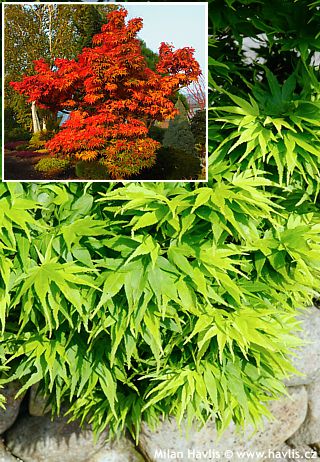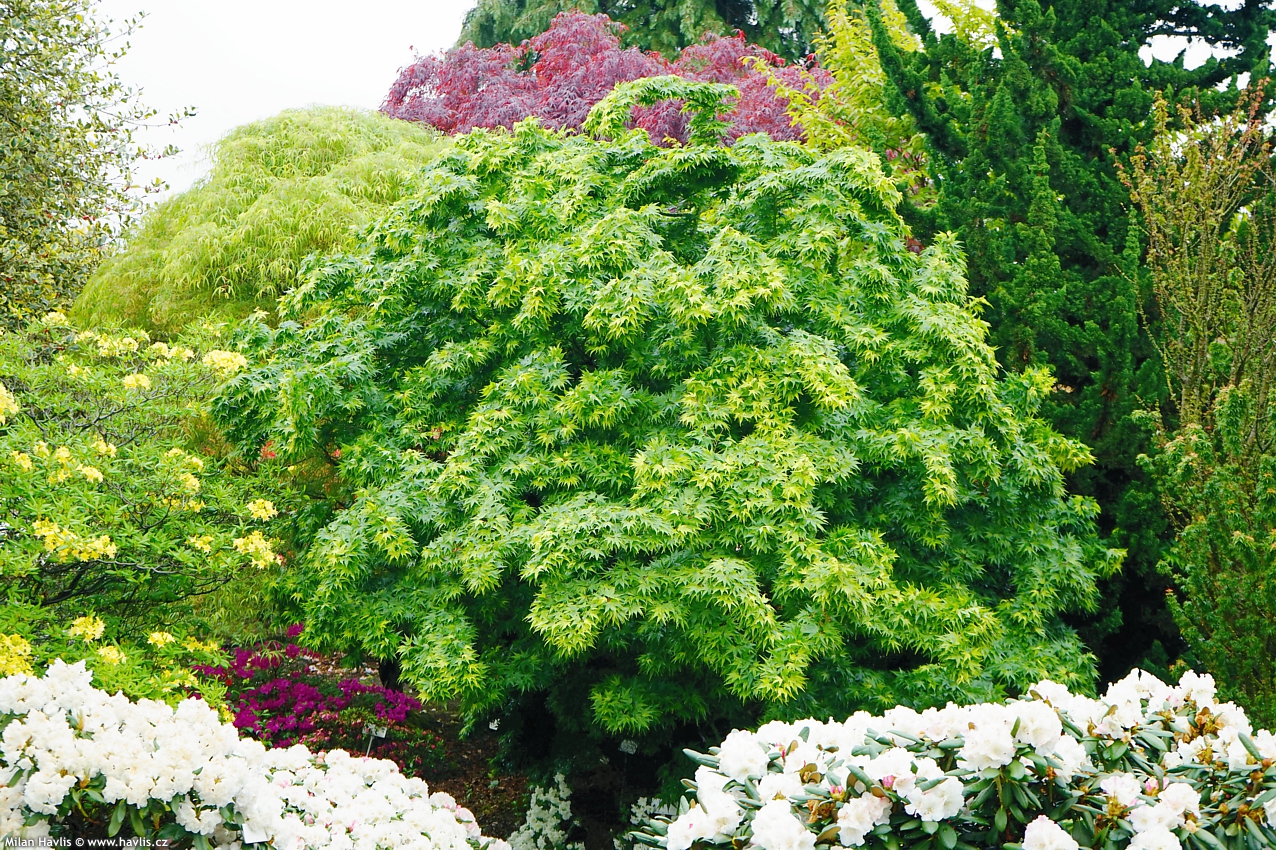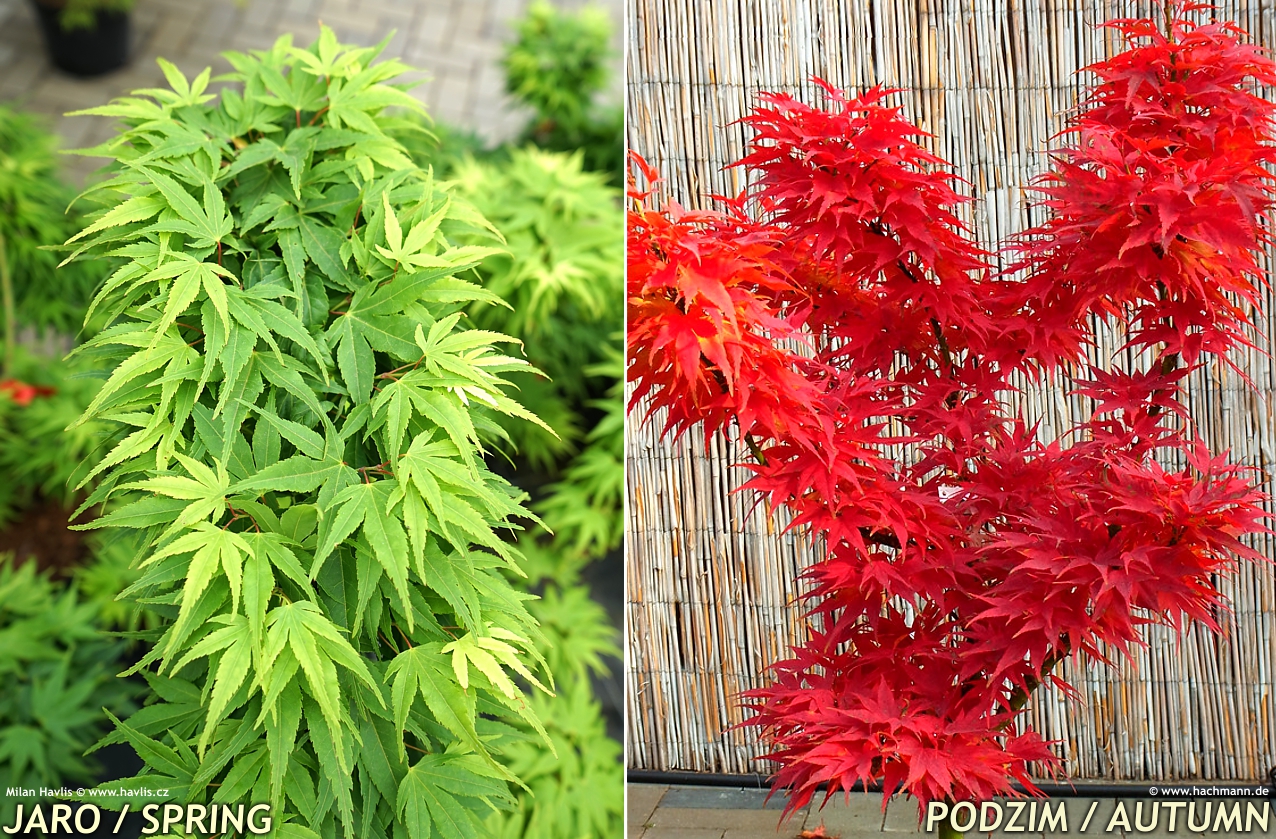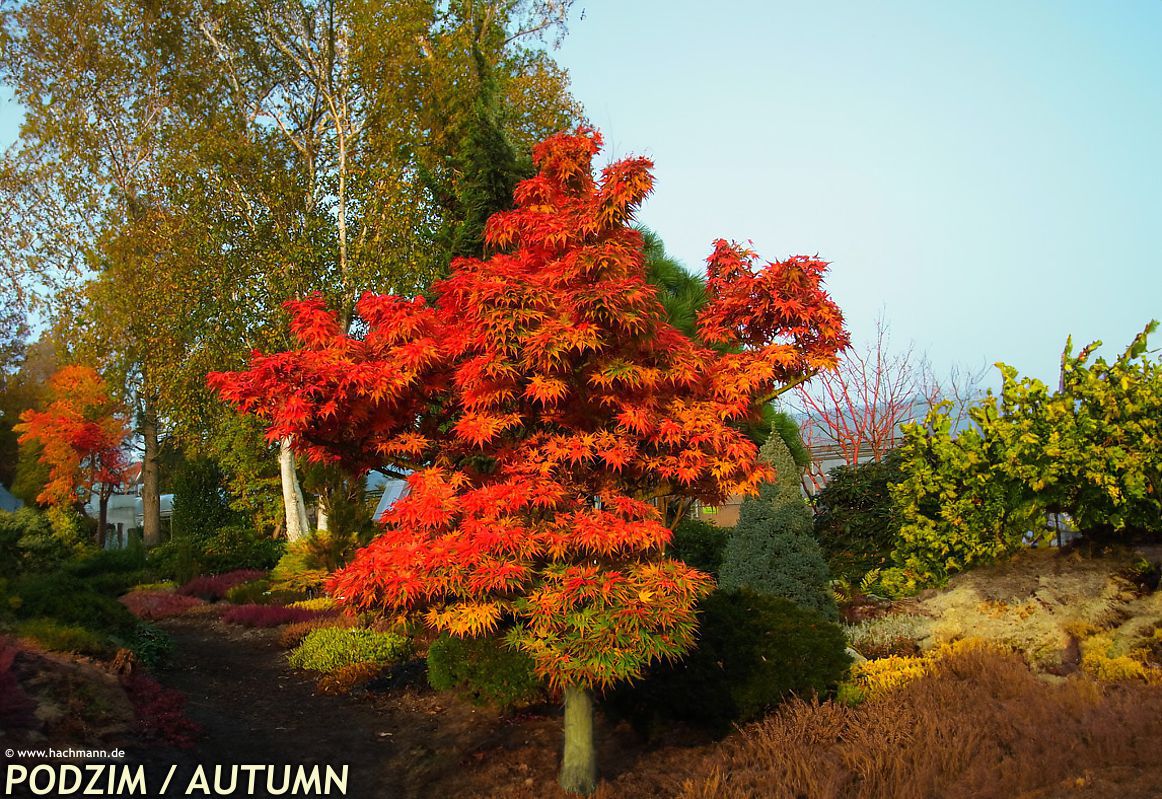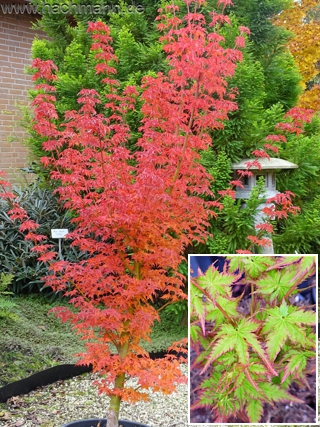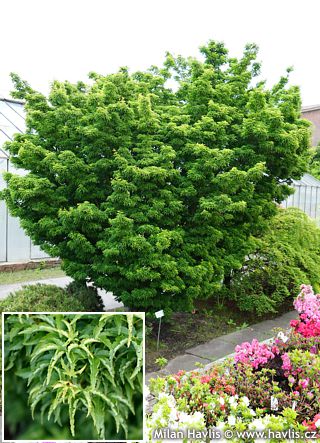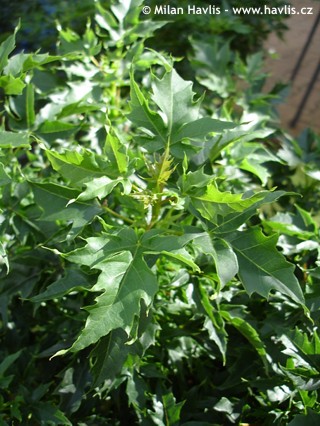Acer palmatum 'MIKAWA-YATSUBUSA' Japanese maple
size/type
medium-sized shrub,taller shrub
usual height
1-2m
usual width
1-2,5m
leaves
deciduous broadleaf
colour of leaves
location
full to partial sun
soil type
acidic (peaty) to neutral
soil moisture requirements
evenly moist but well-drained
USDA zone (lowest)
5 (down to -29°C)
winter protection
for zone 5+6

for zone 7

categorized
Acer
Japanese maples are very decorative and usually low shrubs, occasionally small trees, with attractive foliage and picturesque structure. There are many varieties in various shades of green, chartreuse, golden and yellow, red to maroon, and even multicoloured (variegated). They originate from Asia (Japan, China, Korea), where they have been cultivated for at least two centuries or perhaps even longer, however, they were introduced to Europe only at the beginning of the 19th century, specifically to Great Britain in 1820. Interestingly, the botanist Carl Peter Thunberg described them much earlier, in 1784, because he undertook an expedition to Japan in 1775-1776, discovering new species and collecting seeds and plants. He named the tree Acer palmatum, referring to the leaf shape resembling a human hand with fingers, although it is said that they first reminded him of frog fingers, which is also one of its oldest Japanese names: kaede. The other is momiji (baby hands). The beauty of the colours and shapes of the leaves and trees is reflected in many arts, for example, in the oldest preserved collection of Japanese poetry from the 8th century, the Man'yōshū (Collection of Ten Thousand Leaves). The Chinese poet Wang Wei (699-759) celebrated their beauty in many of his works, and naturally, maples often appeared in ancient paintings, tapestries, porcelain, and wherever classic and traditional decorations associated with the symbolism of these maples were desired: beauty and elegance, serenity, endurance, vitality, and transformation.Description of the plant:
Mikawa-yatsubusa is a precious gem among Japanese maples. It is a particularly slow-growing variety, whose structure (especially without leaves) and strong green branches will definitely remind you of another dwarf beauty Shishigashira. But as soon as it develops its leaves, it is clear that we have a completely unique specimen here. Now, let’s play a game: imagine the number of leaves on, say, a three-meter-tall maple … got it? Now shrivel the plant by a half or even two-thirds and try restacking the leaves along its branches in order to accommodate them all. Got the image? So, this is what I mean by foliage density of Mikawa-yatsubusa. One leaf above another, tumbled forth as if they were in a competition who gets most of the sunlight. From a distance one might even say hey, this is not a maple, it is a hemp plant! The leaves are deciduous, palmate, and the individual leaflets are conspicuously separated from each other and acuminate. They emerge bright chartreuse in spring, mature to medium green in summer, and put on a fantastic show of fiery red and orange hues in autumn. In other words, the plant looks fresh throughout the whole growing season. It manifests a very slow growth rate and forms a widely funnel-shaped shrubs or multi-stemmed trees. Each plant is different and somewhat irregular in shape which, along with its congested and slow growth rate, makes it a sought-after piece among bonsai makers.
Japanese maples need constantly moist soil that has to be well-drained, acidic to neutral, and medium fertile. Keep it mulched all year round. It loves a location with high air humidity, e.g. at a river bank or near a pond but it is not a must. Mikawa-yatsubusa loves full sun for best autumn colours and thrives in partial shade, too. Full shade is not recommended. It is hardy to at least -29 °C (USDA zone 5) and suitable for outdoor planters, too, if kept moist but without a saucer.
Last update 09-12-2023
QUICK PRICE OVERVIEW
CURRENTLY SOLD OUT
WANT TO TRY A SIMILAR PLANT?












